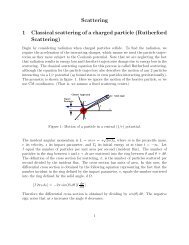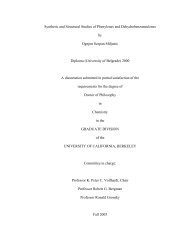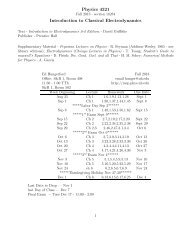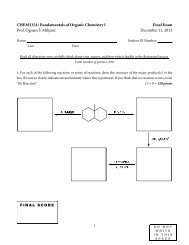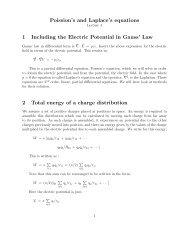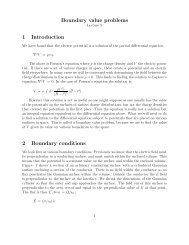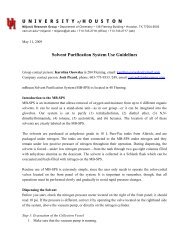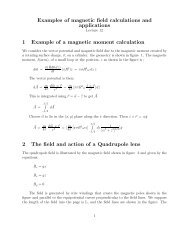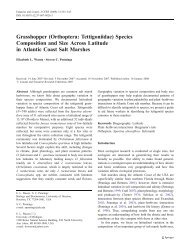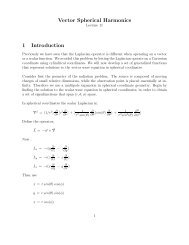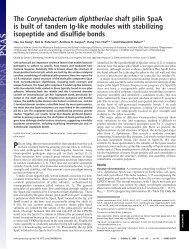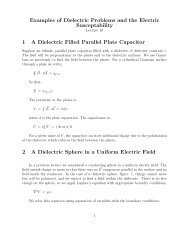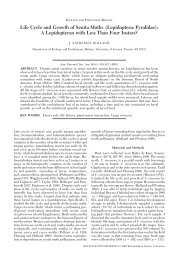Solution to Laplace's Equation in Cylindrical Coordinates 1 ...
Solution to Laplace's Equation in Cylindrical Coordinates 1 ...
Solution to Laplace's Equation in Cylindrical Coordinates 1 ...
Create successful ePaper yourself
Turn your PDF publications into a flip-book with our unique Google optimized e-Paper software.
L<br />
z<br />
V = Vo<br />
V = 0<br />
x<br />
V = 0<br />
a<br />
y<br />
Figure 2: The geometry of a cyl<strong>in</strong>der with one eddcap held at potential V = V 0 (ρ) and the<br />
other sides grounded<br />
V = ∑ n<br />
A n J 0 (k n ρ)s<strong>in</strong>h(k n z)<br />
Now V = 0 for ρ = a. This means that;<br />
J 0 (k n a) = 0<br />
The values of k n a are the zeros of the bessel function J 0 (k n a). The first few are, α 0n =<br />
2.4048, 5.5201, 8.6537, · · ·. Then at Z = L we f<strong>in</strong>d A n us<strong>in</strong>g the orthogonality of the Bessel<br />
functions.<br />
A n = 1<br />
a 2 [J 1 (k n a)] 2 s<strong>in</strong>h(k n L)<br />
∫ a<br />
0<br />
ρdρ J 0 (k n ρ) V 0 (ρ)<br />
The graphic form of the solution is shown <strong>in</strong> figure 3.<br />
As another example we f<strong>in</strong>d the potential <strong>in</strong>side a cyl<strong>in</strong>der when the potential is specified<br />
on the end caps and the cyl<strong>in</strong>drical wall is at zero potential, figure 4. The boundry<br />
conditions are that;<br />
V = V 0 s<strong>in</strong>(φ)<br />
z = L<br />
V = −V 0 s<strong>in</strong>(φ) z = -L<br />
V = 0<br />
ρ = a<br />
The solution must have the form;<br />
4




